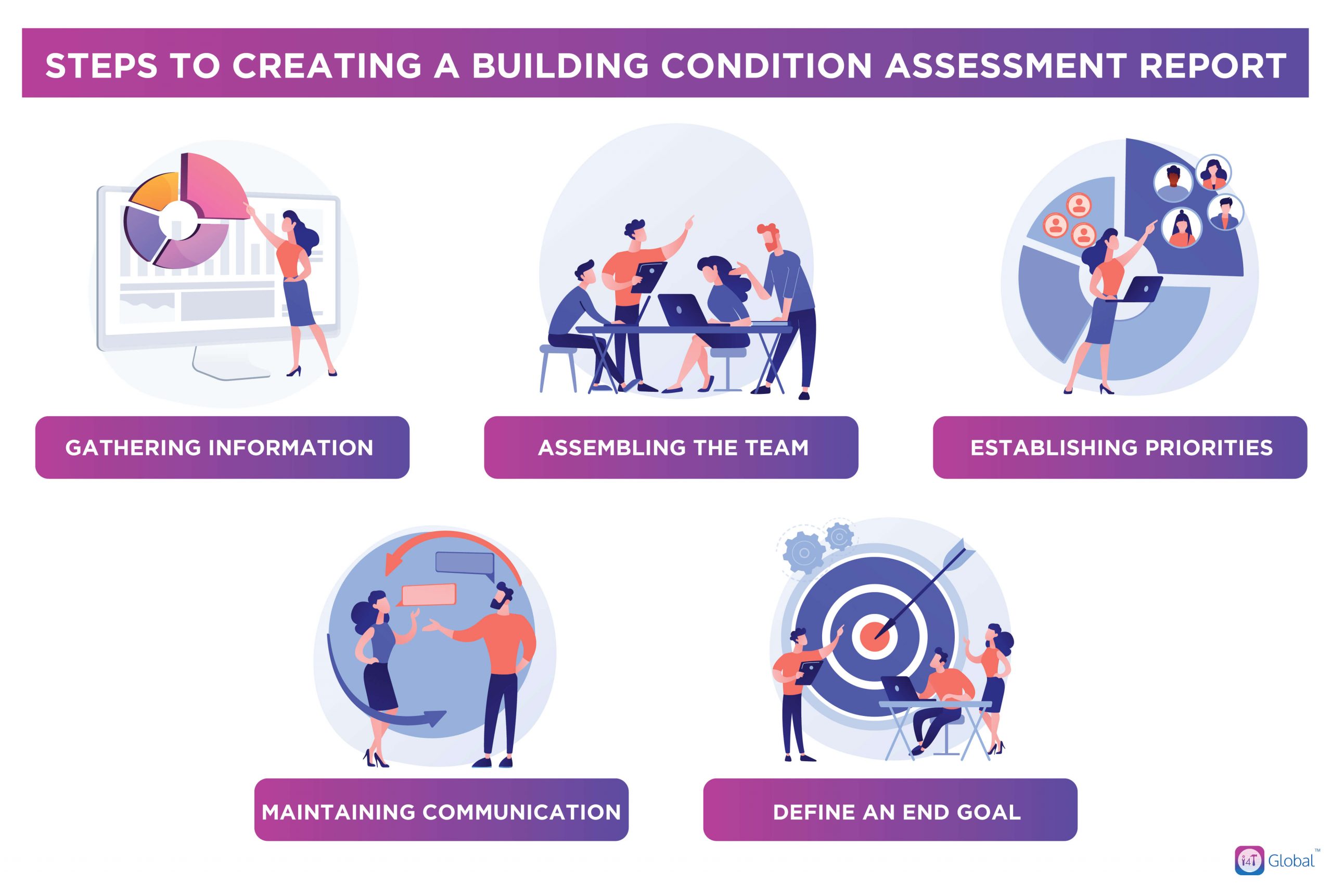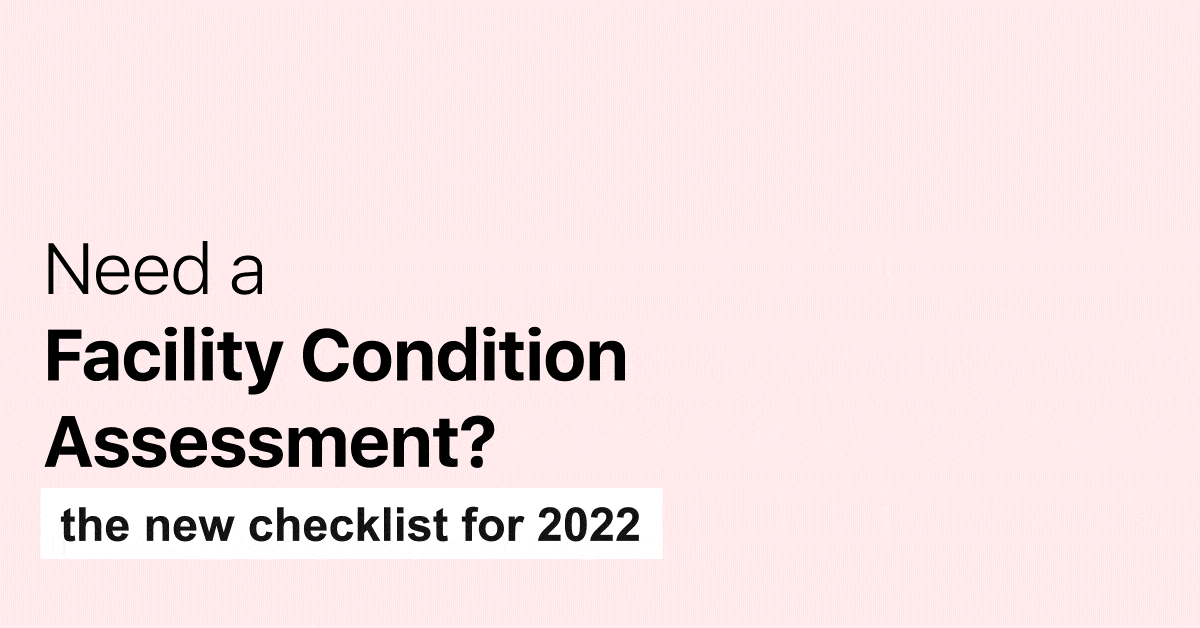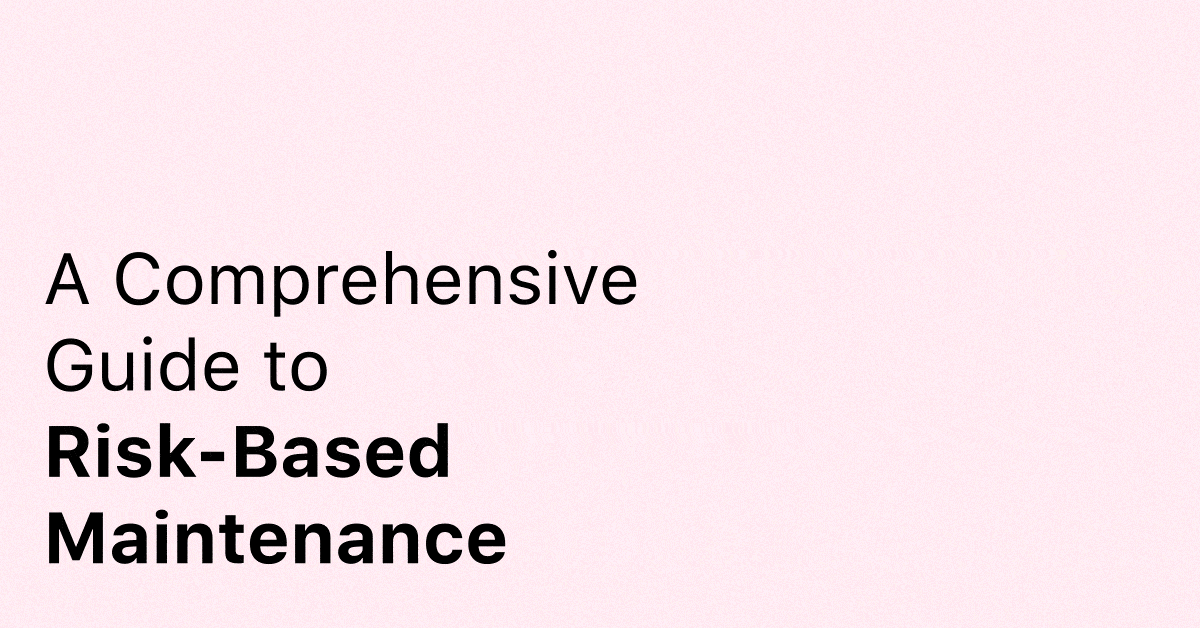What is facility condition assessment (FCA)?
As part of the due diligence process, a facility condition assessment involves a thorough evaluation of a property’s assets. This is done by carrying out complete inspection of the facility, to identify areas that need improvement to keep the facility operating at its best.
This sort of facility condition assessment is generally carried out upon the request of a lender before issuing a loan. It can also be requested by an asset buyer before the purchase of the property.
Facilities condition reports or building assessment reports are prepared for asset owners or real estate managers. This helps them maintain the asset well, enhance its value through renovations, allocate budget to important facilities maintenance tasks and prioritize resources in the most optimum fashion.
The most important feature of facilities condition assessment is the repairs and replacement table. The repairs table identifies immediate capital needs to keep the property functional and safe. The replacement table identifies long-term capital needs to replace systems within the facility over a period of 10 to 12 years.
FCA or building assessment reports also come in handy for year-to-year preventative maintenance tasks. It helps measure the performance of various systems and keeps a track of up-coming repair and replacement tasks related to various units and parts.
Why facility condition assessment is important

It helps real estate owners and managers with:
- Planning for upcoming expenditures based on the physical condition as well as the value of the assets present in a building.
- Make key decisions regarding repairs, renewal and replacement.
- Prioritize items for maintenance/renewal through a comprehensive building condition assessment to determine what is the most urgent maintenance task.
- Perform preventative maintenance through a thorough building health check to minimize the likelihood of sudden breakdowns of systems or parts and reduce the costs related to complete replacements.
- Make buildings more environment friendly by installing energy efficient systems that contribute to net-zero emissions.
Facility condition index
A facility condition index quantifies the cost of maintenance, repair and replacement deficiencies in a building or facility.
It is derived by getting the cost estimates developed for the facility deficiencies and current replacement value. This is essentially the monetary value the organization places on the facility whose condition is being assessed.
The formula to calculate the facility condition index is:

FCI = (Renewal needs and deferred maintenance / Current replacement value) x 100
A low value indicates that the cost of repair is lower than the cost of replacement of the entire facility. A higher value indicates that repair costs are very high. It might as well be a good idea to replace the entire building than to spend so much on repairs.
The higher the ratio, the worse the condition of the building.
Facility condition assessment Vs Property condition assessment
While the two terms might sound like they have the same meaning, facility condition assessment and property condition assessment have different goals.
Property condition assessment is carried out at the time when a property is being transferred from one owner to another. The report studies the condition of the building and all the systems inside it at a given time, typically before the sale.
It identifies the costs associated with fixing the building and maintaining the property over time.
Facility condition assessment, on the other hand, gives a holistic and long-term view of all the costs associated with repair, replacement and maintenance. These are for the individual parts of the building allowing for a detailed estimate of the costs. It also helps to evaluate measures needed to maintain a facility on an on-going basis.
Important facility condition assessment checklist
Your facility is only as good as it is maintained over a period of time so it fulfils its intended purpose. However, getting started with a facility condition assessment can seem like a daunting task, especially if it’s a very large building with lots of systems installed.
- Begin by creating a detailed list that includes all the systems and assets present on your facility, so you don’t miss out anything.
- Add the location as to where each system is installed and each asset is placed. List closely located systems together to save time during the assessment process.
- Take note of which of the listed assets are owned by your organization.
- Record the current age of each of the asset.
- Write down the useful life of each asset listed including all the equipment and systems installed.
- Make a list of any assets that are approaching the end of their useful life or have already surpassed their useful life.
- Note down any performance related issues that have begun to show up or will soon come up and need to be taken care of.
- Also note any compliance related issues such as safety of equipment that needs to be corrected.
- Allocate a severity level to each of the assets and prioritize them in the order they need to be fixed.
- Make cost estimates to attend to each of the problems.
- Make a list of projects that need to be undertaken to fix these issues or upgrade the equipment.
- Set a time to follow up on the findings of the Facility Condition Assessment report.
Having a detailed checklist ensures that no buildings, physical assets or systems that are under your supervision and care are left out. It will also identify potential areas that need to be optimized right away, in the next year and over a period of 5 or more years.
Creating a building condition assessment report

1. Gathering information
This is the first and the most crucial step, involving access to documentation, drawings and the most recent facility condition assessment carried out. It will also include detailed interviews with various personnel to gather further information and identify new deficiencies that were not reported before.
2. Assembling the team
Creating a building assessment report is not a one-man job. It will require assistance of several individuals including architects, electrical, civil and structural engineers, transportation consultant, environmental experts and a cost estimator. The team will share their observations and findings to make sure nothing is missed out.
3. Establishing priorities
The goal is to keep the facility up and running as intended all the time. For this, setting priorities and addressing issues based on severity and urgency is crucial. For example, safety issues take a front seat in terms of upgradation or replacement than performance related problems.
4. Maintaining communication
Making sure the entire team is on the same page not just to save time but also to tap into each person’s knowledge is important. It will also eliminate statistical errors, assist with quality control, track progress and follow up on pending tasks.
5. Define an end goal
Before the team begins the work of creating a facility assessment report, it’s important to identify the end goal and what the FCA aims to accomplish. It could be to make the facility more secure, avoid downtime due to malfunctioning equipment or provide more convenience for the people present on the facility.
Importance of a facility management software
Facility management software is important as it helps you with:
- Asset tracking and management – Ensuring all assets are in good condition and are running glitch-free.
- Business decision making – Providing valuable insights on costs, risks and performance to make strategic decisions.
- Property management– Managing day to day maintenance tasks for all properties under a portfolio.
- Space optimization – Make the best use of space to avoid over population and no use at all.
- Project management – Meeting the scope, time and budget of various projects to track progress and measure success.
- Hiring and managing contractors – Maintaining a handy list of verified contractors, tracking work progress and making payments.
- Financial oversight – Managing purchase orders, quote management and invoicing all from one place.
- Regulatory compliance – Keep on top of your compliance obligations and take immediate actions when a standard is violated or a requirement is not being met.
- Team management – Enabling teams to perform better by increasing their productivity.
- Mobility and collaboration – Ability to access all information from anywhere improves data sharing and team collaboration in the office or on the go.
Wrapping up
Hot off the press!

With our cutting-edge technology and in-depth knowledge of how the Field Service Management sector operates, the i4TGlobal Team loves to share industry insights to help streamline your business processes and generate new leads. We are driven by innovation and are passionate about delivering solutions that are transparent, compliant, efficient and safe for all stakeholders and across all touch points.




